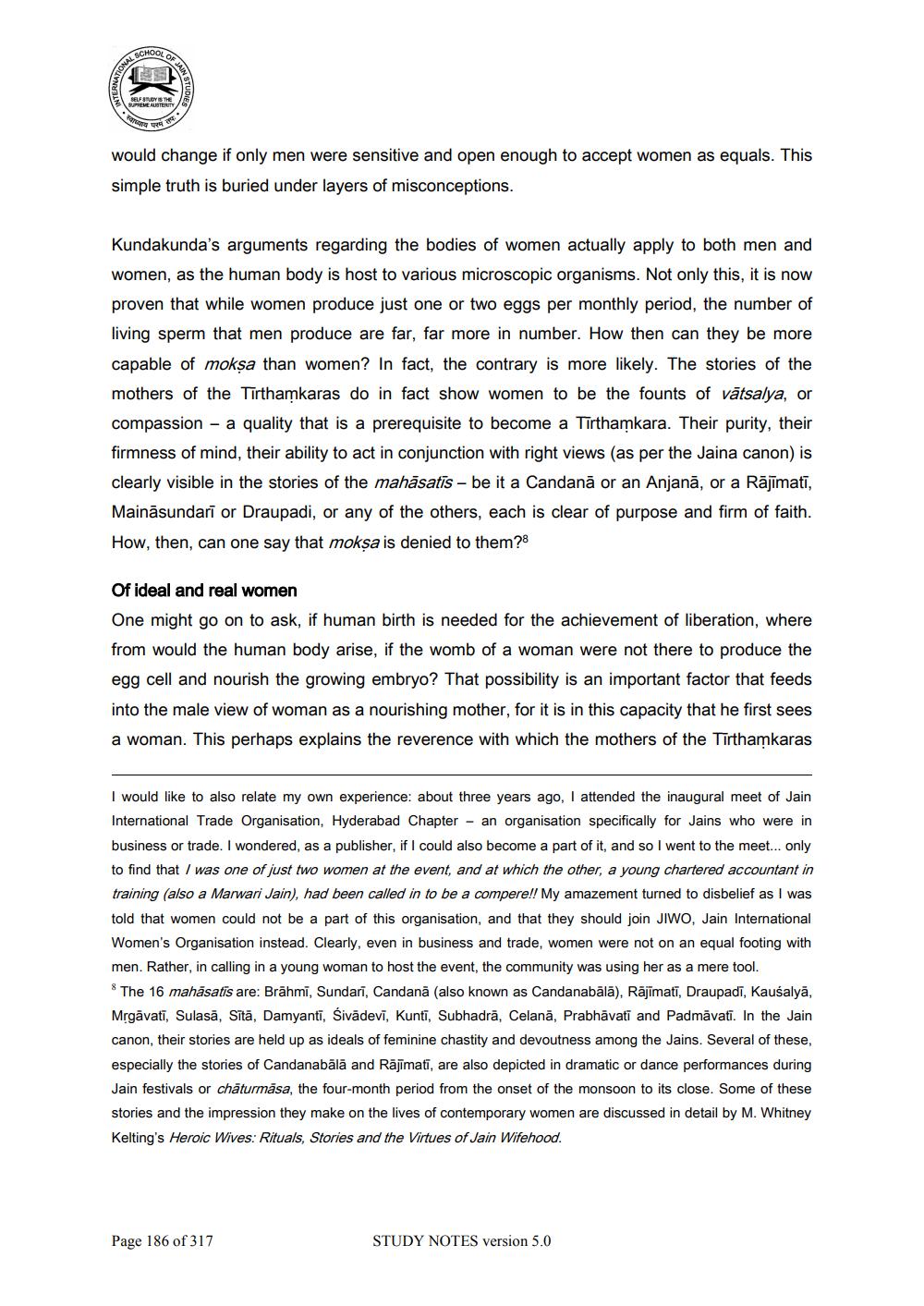________________
would change if only men were sensitive and open enough to accept women as equals. This simple truth is buried under layers of misconceptions.
Kundakunda's arguments regarding the bodies of women actually apply to both men and women, as the human body is host to various microscopic organisms. Not only this, it is now proven that while women produce just one or two eggs per monthly period, the number of living sperm that men produce are far, far more in number. How then can they be capable of mokṣa than women? In fact, the contrary is more likely. The stories of the mothers of the Tirthamkaras do in fact show women to be the founts of vātsalya, or compassion - a quality that is a prerequisite to become a Tirthamkara. Their purity, their firmness of mind, their ability to act in conjunction with right views (as per the Jaina canon) is clearly visible in the stories of the mahāsatīs - be it a Candanā or an Anjanā, or a Rājīmatī, Maināsundari or Draupadi, or any of the others, each is clear of purpose and firm of faith. How, then, can one say that moksa is denied to them?8
Of ideal and real women One might go on to ask, if human birth is needed for the achievement of liberation, where from would the human body arise, if the womb of a woman were not there to produce the egg cell and nourish the growing embryo? That possibility is an important factor that feeds into the male view of woman as a nourishing mother, for it is in this capacity that he first sees a woman. This perhaps explains the reverence with which the mothers of the Tirthamkaras
I would like to also relate my own experience: about three years ago, I attended the inaugural meet of Jain International Trade Organisation, Hyderabad Chapter - an organisation specifically for Jains who were in business or trade. I wondered, as a publisher, if I could also become a part of it, and so I went to the meet... only to find that/ was one of just two women at the event, and at which the other, a young chartered accountant in training (also a Marwari Jain), had been called in to be a compere!! My amazement turned to disbelief as I was told that women could not be a part of this organisation, and that they should join JIWO, Jain International Women's Organisation instead. Clearly, even in business and trade, women were not on an equal footing with men. Rather, in calling in a young woman to host the event, the community was using her as a mere tool.
The 16 mahāsatis are: Brāhmi, Sundari, Candanā (also known as Candanabālā), Rājimatī, Draupadi, Kausalyā, Mrgāvati, Sulasā, Sītā, Damyanti, Sivādevī, Kunti, Subhadrā, Celanā, Prabhāvati and Padmavati. In the Jain canon, their stories are held up as ideals of feminine chastity and devoutness among the Jains. Several of these, especially the stories of Candanabālā and Räjimati, are also depicted in dramatic or dance performances during Jain festivals or chaturmasa, the four-month period from the onset of the monsoon to its close. Some of these stories and the impression they make on the lives of contemporary women are discussed in detail by M. Whitney Kelting's Heroic Wives: Rituals, Stories and the Virtues of Jain Wifehood.
Page 186 of 317
STUDY NOTES version 5.0




